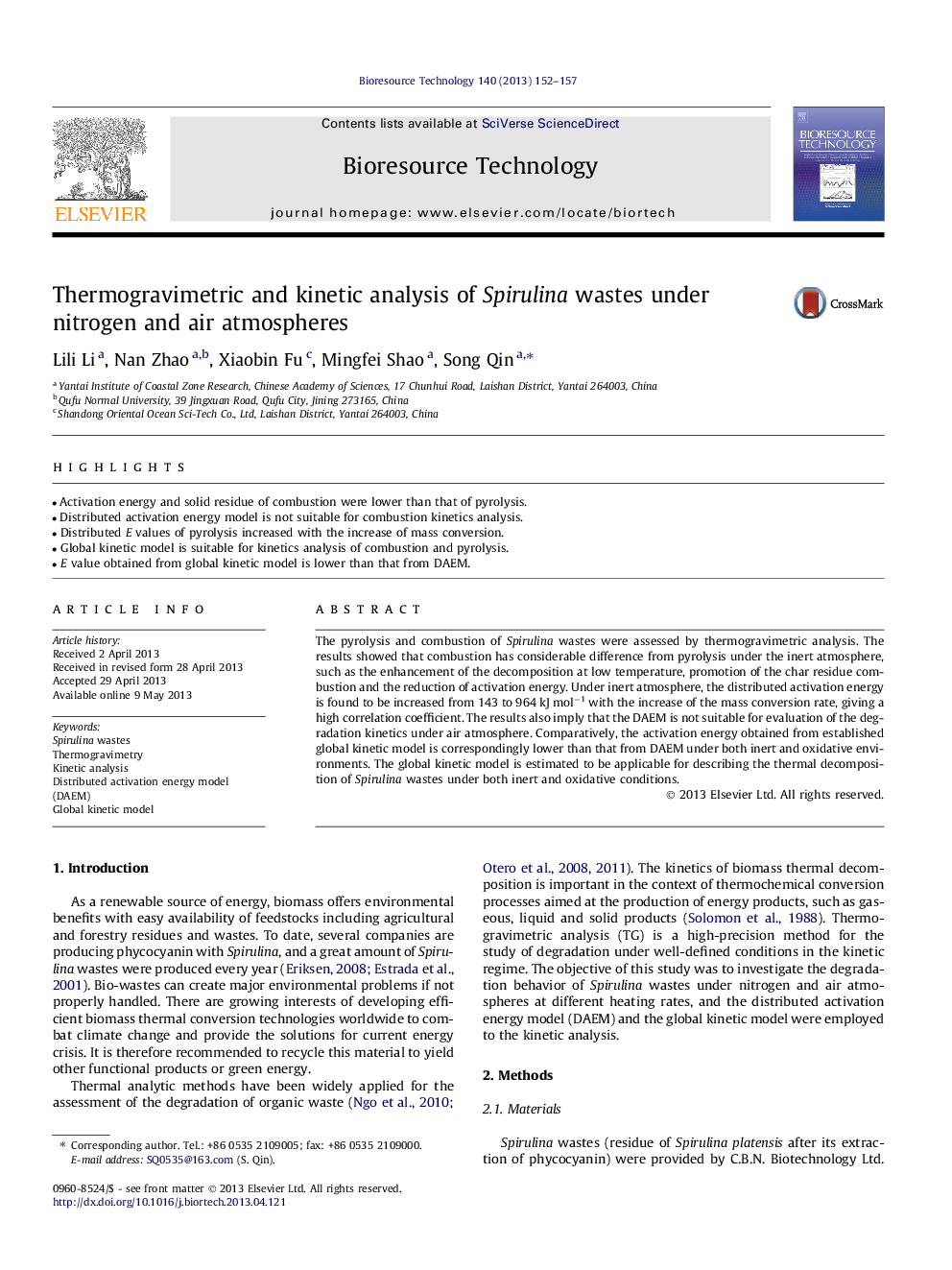| Article ID | Journal | Published Year | Pages | File Type |
|---|---|---|---|---|
| 7082238 | Bioresource Technology | 2013 | 6 Pages |
Abstract
The pyrolysis and combustion of Spirulina wastes were assessed by thermogravimetric analysis. The results showed that combustion has considerable difference from pyrolysis under the inert atmosphere, such as the enhancement of the decomposition at low temperature, promotion of the char residue combustion and the reduction of activation energy. Under inert atmosphere, the distributed activation energy is found to be increased from 143 to 964Â kJÂ molâ1 with the increase of the mass conversion rate, giving a high correlation coefficient. The results also imply that the DAEM is not suitable for evaluation of the degradation kinetics under air atmosphere. Comparatively, the activation energy obtained from established global kinetic model is correspondingly lower than that from DAEM under both inert and oxidative environments. The global kinetic model is estimated to be applicable for describing the thermal decomposition of Spirulina wastes under both inert and oxidative conditions.
Related Topics
Physical Sciences and Engineering
Chemical Engineering
Process Chemistry and Technology
Authors
Lili Li, Nan Zhao, Xiaobin Fu, Mingfei Shao, Song Qin,
